This first session is designed to guide you through a process of building the habit of Perseverance in your pupils.
It invites you to undertake some rich activities in the form of learning experiments in your classrooms, helping you to organise your own discoveries and extend your own understanding of the power of building pupils’ learning habits.
Work through sections 1 – 4 where you will consider:
- Perseverance and how it develops. Unpick the meaning of perseverance, how it develops over time and use the Perseverance grid to plot where your pupils are now.
- Taking Perseverance into classroom culture. An introduction to the classroom culture of Building Learning Power with particular reference to nurturing perseverance. Check what you do now.
- Introducing activities and routines. Look for ways to build Perseverance into learning activities/tasks.
- Team reflection and planning. Share the impact of your experiments with colleagues and plan what you need to do next.
Section 1: Perseverance and how it develops
1.1 What is Perseverance?
“Attention can be broken when learning gets blocked, but good learners have learnt the knack of maintaining or quickly re-establishing their concentration when they get stuck or frustrated. The quality of stickability or perseverance is essential if you are going to get to the bottom of something that doesn’t turn out as quickly or easily as you had thought, or hoped.
If you get upset and start to think there is something wrong with you as soon as you get stuck, you are not going to be able to maintain engagement.
Instead, all your energy will go into trying to avoid the uncomfortable feeling, and this may mean drifting off into a daydream, creating a distraction, or blaming somebody else. A great deal of classroom misbehaviour starts this way. If pupils were better equipped to cope emotionally with the inevitable difficulty of learning, they would mess about less. There is a range of things that teachers can do to strengthen pupils’ stickability.
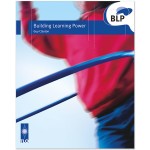
Building Learning Power, Guy Claxton
Perseverance is often undermined by two common and erroneous beliefs. The first is that learning ought to be easy. If learners think that they will either understand something straight away, or not at all, then there is simply no point in persisting and struggling. The second is that bright people pick things up easily, so if you have to try it means you’re not very bright. Clearly the idea that effort must be symptomatic of a lack of ability makes persevering an unpleasant experience. Good learners develop perseverance when their parents and teachers avoid conveying these messages, even unwittingly.”
Extract from Building Learning Power, by Guy Claxton
In a nutshell…
Perseverance is about;
Keeping going in the face of difficulties; channeling the energy of frustration productively; knowing what a slow and uncertain process learning often is.
A mature learner understands that real learning requires effort and persistence, relishes opportunities to struggle with challenge, and believes that with effort they can become a more effective learner.
What do you think?
- Are you aware of pupils who prefer to succeed at ‘easy’ work ?
- Are you aware of pupils who are over-anxious to get things ‘right’?
- Does your reward system reward attainment over ‘having a go’?
- Are you aware of parents who view success mainly in terms of achievement and progress?
Make a note of…
- Pupils who remain optimistic when faced with challenge
- Pupils who remain optimistic after making a mistake
1.2 How perseverance might build when we nurture it
Being perseverant isn’t something that switches on on good days and off on bad days. Perseverance grows and builds when it’s nurtured and supported. Furthermore, being perseverant involves gaining control of a range of linked skills and emotions. Take a look at how progression in Perseverance might grow across six components.
Cast your eye over the ‘big picture’ of growing Perseverance below. Then move on to finding out what the columns (1.3) and the rows (1.4) are all about.
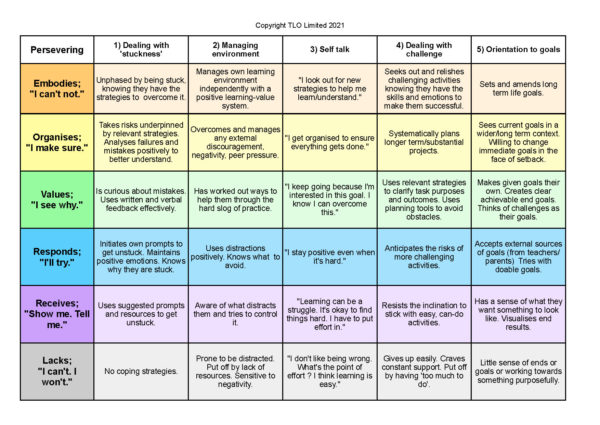
1.3 Unpick the columns; what contributes to a readiness to Persevere?
The grid columns are things that might combine to make up the skills and attitudes of a Perseverer.
Overview of the grid
Perseverance is about the way we stick at things even when they are difficult. It’s one of the most useful but neglected learning behaviours. What makes us able to persevere more and more usefully? We think several things come into play here. How you are willing and able to deal with being stuck, how you are able to manage distractions and manage the learning environment, how you relate to a challenge and whether you are influenced by goals whether they be your own or imposed by others. All these things contribute to being able to persevere. And lastly there’s your own little voice of self awareness: what you say to yourself and how this influences your beliefs and values.
Take a closer look at what each column of the grid is about
 1) Dealing with ‘stuckness’
1) Dealing with ‘stuckness’
How we deal with being stuck
- Column 1 is all about way how we react when we get stuck; the strategies we have for overcoming it; being brave about not knowing something; how we cope with making mistakes; how we benefit from feedback about mistakes or being stuck; how we come to love mistakes, become curious about them and learn from them. There’s a long and winding road buried in the statements in this column and the role of the teacher is to ensure pupils make a significant start on this journey.
 2) Managing the learning environment
2) Managing the learning environment
How adept we are at maintaining focus
- Column 2 is about how we manage our learning environment; the extent to which we can manage our own learning climate, ignore or manage distractions, regain focus if lost. Since much of pupils’ learning takes place in a classroom, they need to be able to manage and take advantage of that environment. They learn to understand just what distracts them from learning and why distractions can be both a help and a hinderance. How they need to learn to overcome the hard slog of practice and use their environment to help. How the learning environment can include all sorts of negativity from others and how they might overcome these disruptive emotions. The learning environment itself has many facets that can trip up and stall learning.
 3) Self-talk
3) Self-talk
The voice of self awareness
- Self-talk is what we say to ourselves as we learn. The statements capture what someone in each phase of the grid might be thinking. Students may use some of these phrases when talking with you, or in writing from time to time, but mostly self-talk goes on inside their heads. We have shown a small flavour of self talk thoughts that teachers can encourage students to imitate. Some relate to standards, others to self monitoring, or flexibility. All such self-talk is important in building a persevering habit.
 4) Dealing with challenge
4) Dealing with challenge
The relationship we have with challenge
- Column 4 is about how we relate to challenge: are we more excited by the prospect of triumphing over challenge, or more afraid of failing when faced with difficulty? Challenge needs to be included here with Perseverance because there is little need to persevere with easy, familiar activities. Pupils need to be challenged even for us to discover how or whether or not they persevere at all. So the growth of ways to cope with challenge helps to cement Perseverance too. Here they learn to enjoy a challenge and recognise the satisfaction of triumphing over difficulty. The phases include practical ideas like recognising risks, sorting out what the challenge is fundamentally about, and using tools to plan and avoid obstacles.
 5) Orientation to goals
5) Orientation to goals
How our orientation to goals influences our determination to persevere.
- Column 5 concerns goals; having goals can have an impact on our perseverance. Let’s face it, if you haven’t got a goal, or at least an interest in something, you are not likely to stick at it and channel your emotion positively to get it done. In the beginning pupils have little sense of goals or purpose but this can be turned into being able to imagine what something might look like. Later pupils can be helped to understand what a ‘do-able’ goal is and how to turn goals set by the teacher into a goal that they want to achieve – to make it their goal. A wanted goal is something you put effort into. Later phases in this development include being able to put your goals into a wider context, to realise that being able to do X or Y isn’t just about the here and now but has wider implications for life. This will certainly come into play when choosing options, for example. Do pupils go for something they like, enjoy and find easy or do they chose some options on the basis of their relevance to their future career? It’s a hard and grown up sort of decision to make. This orientation to goals all turns on how we design our own goals, blend these with the goals of others, and then pursue them with tenacity and independence.
What do you think?
- What have you learned about Perseverance from these descriptions?
- What have you had confirmed?
- What surprised you?
- How have your views changed?
Make a note of…
- Any ideas for practical classroom experiments that these descriptions have triggered.
- Which column your students are most secure in.
1.4 Unpick the rows; getting better at Perseverance
Of course the development of Perseverance does not grow neatly up each column or evenly across the phases in the grid. The five broad phases of dispositional growth (purple – orange) are affective ways in which people may be inclined to behave: we call this inclination ‘mindedness’.
Here is our interpretation of how Perseverance might grow.
Meaning behind the phases
The phases are drawn from Bloom’s taxonomy of the affective domain.
Phase ‘Receives’ (purple) is about doing something because you are told or expected to.
Phase ‘Responds’ (blue) is about gaining interest and doing things more willingly.
Phase ‘Values’ (green) is a key phase since the student now sees the value of behaving in this way. It’s a win for them; to behave like this is in their interest. It’s in this phase that the behaviour becomes more secure.
Phase ‘Organises’ (yellow) is the phase in which the student capitalises on this ‘in their interest’ behaviour and gets themselves organised to use it positively.
Phase ‘Embodies’ (orange), known as ‘characterised’ in the original taxonomy. In this phase the student has made this behaviour their own. It has become part of their character; they can’t not do it and they have become highly skilled in doing it.
We urge you to see this progression as long term. Some phases will take years for people to work through; some will never be worked through. None of the phases are inevitable. There is a lifetime of development captured here. Nevertheless the role of a teacher or parent should surely be to encourage and enable this journey.
Lacks: Minded to give up easily and be needy for support
 In this ‘Lacks’ (grey) phase, students are minded to give up easily. There are all sorts of reasons for this; they may just be constantly distracted from the activity in hand; they may just need constant support from an adult; they may not know which resource might help them or they simply don’t know what stuck means, let alone how to get unstuck. Many pupils will need to be eased into learning how to learn in a classroom setting and how/what perseverant learners behave/do.
In this ‘Lacks’ (grey) phase, students are minded to give up easily. There are all sorts of reasons for this; they may just be constantly distracted from the activity in hand; they may just need constant support from an adult; they may not know which resource might help them or they simply don’t know what stuck means, let alone how to get unstuck. Many pupils will need to be eased into learning how to learn in a classroom setting and how/what perseverant learners behave/do.
Receives: Minded to seek to stay in their comfort zone
 In the Receives (purple) phase, students have made a big leap from having a negative mindset to a neutral one. Here they are inclined to play it safe, staying within their own comfort zone to ensure success and avoid perceived failure. They still need adult support to maintain focus and optimism when tackling tasks they perceive as difficult, but beginning to show willing to take more responsibility.
In the Receives (purple) phase, students have made a big leap from having a negative mindset to a neutral one. Here they are inclined to play it safe, staying within their own comfort zone to ensure success and avoid perceived failure. They still need adult support to maintain focus and optimism when tackling tasks they perceive as difficult, but beginning to show willing to take more responsibility.
Responds: Minded to be willing to believe that effort will pay off
In the Responds (blue) phase students develop greater independence and are motivated by trying to reach achievable goals. They are realising that fear, the need for adult support, and distraction can be overcome by having/using more coping strategies and practical ideas to get them unstuck.
Values: Minded to recognise the point of persevering in learning
In the Values (green) phase the pupil has developed a strong belief that they can get better at learning. They become curious about mistakes and care about the goals they are trying to reach. They develop and use many practical strategies to assist them in dealing with challenge, being stuck and staying focused.
Organises: Minded to learn how to persevere more productively
In the Organises (yellow) phase the pupil organises themselves to get the job/task/problem done. Risk-taking is underpinned by sound strategies. Failures are analysed for greater understanding. They have accepted responsibility for their behaviour.
What do you think?
- What has struck you about the act of Perseverance having read the descriptions above?
- Which phase do you operate in?
- What makes you say that?
Make a note of…
- What you might do to assist your students to make headway in their Perseverance behaviour.
- Any practical ideas the text has triggered.
Activity 1: Where are my pupils now?
- Download grid to colour in
- Colour in the cells where you think your pupils are secure.
- Draw a red line across the grid to denote where you think most of the school’s students could and should reach by the time they leave.
- Please take the results of these tasks with you to the Professional Learning Team session shown in Section 4
Section 2: Taking Perseverance into classroom culture
2.1 Teachers as habit formers
As teachers we are in the habit-forming business. Those habits that we model in front of young people influence the ways in which they perform and behave. Therefore, we need to be sure to foster productive learning habits. If, for example, we offer constructive feedback but fail to require students to act on it, we are not building their inclination to further improve on previous attempts. In such ways do good teachers, albeit inadvertently, stifle the very behaviours they are seeking to promote.
Activity 2: Does my classroom climate encourage Perseverance?
Classroom culture is all-important in building pupils’ learning power. It’s about roles and relationships in the classroom, how learning is organised, the vocabulary of learning, and what gets celebrated. A classroom climate that supports and nourishes the inclination to persevere is characterised by: a culture that prizes effort over attainment; high-challenge low-stress activities; a language of ‘learning’, not ‘work’ and that being stuck is an interesting place to be; the feeling that students can fail ‘in safety’.
Developing a perseverance-friendly culture needs teachers to believe that:
- Real learning comes from making mistakes and overcoming being stuck
- Being stuck is an interesting, not shameful, place to be
- Mistakes are learning opportunities
- Real learning requires effort, and good teaching is about putting the learning in the extended grasp of the learner
And through such a persevering culture students come to believe that:
- Effort is part and parcel of the learning process, and I’m discovering how to do this
- Having to try doesn’t mean I can’t be good at it
- I can learn more from making mistakes
- Giving up should be considered only when other strategies have failed
- Easy work doesn’t help me really learn
Get a feel for your classroom culture and how this may be working for or against positive approaches to students becoming increasingly willing to persevere.
Look through the ideas carefully and consider whether you already use some, and whether any appeal to you to try.
Activity 2 – Classroom Observation-Perserverance
What do you think?
- What do your answers suggest?
- How does your picture of classroom culture contribute to students’ approaches to Perseverance?
- Is this broadly negative or positive?
- What insightful ‘Ah ha’ moments did you have as you read through the list?
- How have these changed your view of Perseverance?
Make a note of…
- An idea on the list that you use but might want to tweak a little.
- An idea on the list you want to start doing.
- Any ideas that look as if they might help students to become better at Perseverance.
Section 3: Teaching for learning; activities and talk.
So far, you have:
- Looked at your students through the lens of the Perseverance learning grid
- Gained a sense of what becoming better at Perseverance looks like
- Considered how you might shift the culture of the classroom to nurture Perseverance
Now we look more closely at things you can actually do in the classroom to provoke, guide and support students to get better at Perseverance; to build the phases of Perseverance mindedness.
Go to the phase that you have already identified as the one that most of your students need to develop next.
In each Tab box below you will find an overview of the teacher’s role followed by a range of suggestions linked to making the classroom culture more Perseverance-friendly. After each suggestion you will see a brief statement in green that reinforces the cultural aspect of the idea. While some suggestions are one-off ideas, many can be used several times during a year or indeed be made into a classroom routine and thereby shift the culture.
Moving from Grey → Purple (Receives)
Receives: Minded to seek to stay in their comfort zone
 In the Receives (purple) phase, students have made a big leap from having a negative mindset to a neutral one. Here they are inclined to play it safe, staying within their own comfort zone to ensure success and avoid perceived failure. They still need adult support to maintain focus and optimism when tackling tasks they perceive as difficult, but beginning to show willing to take more responsibility.
In the Receives (purple) phase, students have made a big leap from having a negative mindset to a neutral one. Here they are inclined to play it safe, staying within their own comfort zone to ensure success and avoid perceived failure. They still need adult support to maintain focus and optimism when tackling tasks they perceive as difficult, but beginning to show willing to take more responsibility.
Behaviours to secure, Moving from Grey to Purple
Perseverance can be promoted both by how you structure the learning environment and how you help pupils to think of themselves as learners.
Your role as a teacher in this phase is to:
- Introduce the concept of Perseverance in order to avoid pupils becoming too dependent on adults and begin to understand that being ‘stuck’ is a good place for a learner to be
- Introduce the concept of Managing Distractions in order to help pupils to focus their efforts on learning
- Introduce the concept of comfort zones in order to help pupils begin to understand what they find challenging and how they might view failure and mistakes more positively.
In other words you are beginning to make learning visible: uncovering and exploring how it feels, what makes it work, and what the pupil’s role in the process is to be.
Introducing the concept of Perseverance.
Adopt a character (ages 4-10)
‘Adopt’ a character – real, imaginary, human or animal – who exhibits the best features of perseverance. Talk about the character until your children become familiar with its attributes. When you have set a group to work on a particular task – numeracy, reading, writing etc., leave this character (actual or picture) on their table as a reminder of ‘what to do when you don’t know what to do’.
Introducing the learning vocabulary
Sing a song (ages 4-10)
Learn to sing ‘Incy Wincy Spider’ and talk about how spiders persevere with their web building and thread climbing.
Introducing the learning vocabulary
Link perseverance to life in general (ages 8-12)
A range of short ideas to help pupils link perseverance to the world in general.
Use as a start-up activity for introducing Perseverance.
Introducing the learning vocabulary
Show an animation (ages 4-10)
1 minute animation to illustrate an aspect of Perseverance.
Use it to talk about trying other ways to achieve what you want to do.
It’s about shifting responsibility for learning to the learner.
Make your own class animations for different aspects of Perseverance.
Introducing the concept of Managing Distractions
Distraction scales
Ages 8-12
Build greater awareness of pupils’ distractibility and extend the vocabulary about distraction.
Introducing the learning vocabulary and learner self talk
Resource contains:
Have a discussion (ages 8-12)
A range of short ideas to help pupils understand Perseverance.
NB. Where we have used the word ‘Resilience’ – please now read ‘Perseverance’
Introducing the learning vocabulary
Lots of ways to deal with distraction (ages 4-8)
Read about another six ways in which you might introduce and extend thinking about distractions.
Encouraging learners to be crew not passengers
Nurture the capacity to manage distractions (ages 4-12)
Look at pages 12-13 in this book to find another five ideas about how you might develop and nurture pupils’ capacity to manage their distractions.
Extract from Building Learning Power in Action, by Sarah Gornall, Maryl Chambers, Guy Claxton
Try a quick activity (ages 8-16)
Two activities to introduce pupils to exploring what distractions are and the things that distract them.
Worth using every so often to gauge improving attitudes
Read a story (ages 4-8)
Contains
- A ready made story – where Soli discovers how things get in the way and stop us from getting on
- Questions to use to explore:
Use the distraction questions to explore this idea in other stories.
Model distractions (ages 4-8)
A quick starter activity to illustrate the meaning of distraction.
Explore the effects of distractions on pupils
Link managing distractions to life in general (ages 8-12)
A range of short ideas to help pupils link managing distractions to the world more widely.
Use as a start-up activity for introducing distractions.
Introducing the concept of getting unstuck
Generating stuck prompts (ages 4- 18)
Every classroom needs them!
See also an extract from Learning to Learn – The Fourth Generation, by Guy Claxton
Stuck Posters.
Work with pupils to find useful questions for them to ask themselves and helpful strategies which they might take when they are stuck. Ensure that there are plenty of options that come higher on the list than “Ask the teacher”. Create displays as reminders.
Extract from Building Learning Power in Action, by Sarah Gornall, Maryl Chambers, Guy Claxton
So called Stuck posters or prompts come in various shapes and sizes, but essentially they are simply home-made lists of what pupils can try when they get stuck with their learning: ‘Read the question again’, ‘Split the question into smaller bits’, ‘Try sounding the word out letter by letter’, ‘Ask your neighbour’ — that kind of thing. If the teacher were simply to photocopy the list from a L2L manual and stick it on the wall it wouldn’t work. But in a BLP classroom, the ideas are generated by the students themselves, and are the subject of continual debate and refinement.
“Instead of simply dishing out more good advice to students-as-consumers, classrooms are becoming places of day-by-day knowledge generation about learning”
Students are challenged to produce a continual stream of ever more sophisticated ideas about how they can boot-strap their own ability to be independent learners, and these are accumulated and displayed as ever-expanding public records of their achievement. To begin with, the teacher trains the students to make use of this information by greeting every request for prompting with; ‘Have you looked at the poster?’ After a while, looking at the poster becomes routine, and eventually, when the habit of self-unsticking becomes second nature, even the poster becomes redundant. It does not take long, in such a Fourth Generation L2L classroom, before ‘Ask the teacher’ becomes a last-ditch strategy, to be engaged only when all else has failed.
By contrast, when effort becomes seen as natural and interesting, the habit of perseverance expands, and a subtle but powerful shift in the classroom atmosphere begins to occur. It is in this kind of way that BLP moves up a gear, from the technical to the cultural. In a sense the STUCK poster is a stand-alone technique, but it can be much more than that if the teacher wants it to be. It can be used as an effective, low-risk, low-investment lever for creating a shift in students’ sense of what is valued, what is normal, and what is the point of their learning — and thus in the quality of their engagement.
A must do part of any BLP classroom
Read a story (ages 4-10)
A ready made story – where Jay learns that everyone can find learning difficult. Provides an opportunity to think about the feelings that often go with learning or doing something new.
- Questions to explore
- the story itself
- the ideas of stickability
Use the stickability questions to explore this idea in other stories.
Try a quick activity (ages 8-12)
NB. Please read Perseverance for Resilience.
A 5 minute activity to introduce pupils to broad ideas of stuck and perseverance
This resource consists of
Explore challenge and stuck (ages 4- 11)
A whole class activity set up to ‘explore the nature of challenge, the difficulties encountered and how they work to overcome them
Contains
[/two_third_last]
Introducing the concept of Comfort Zones
Explore comfort zones (ages 4-11)
Loosely based on Vigotsky’s work on Zone of Proximal Development, this activity uncovers how we feel about things we do, or don’t do.
Use it to explore how different tasks present different challenges to individuals
- what would panic some would be comfortable for others
- the negative feelings of learning and overcoming them
Helps to prepare for stretch and challenge as a natural part of learning
Design a ‘Riskometer’ (ages 4-11)
Draw a thermometer on the wall, with a scale from overstretched to low or coasting. Work with the class to describe the various levels. High might read “I took the step to try something just a bit harder than before. I worked on it until I could do it and understood it clearly” and Overstretched might be “This was a few steps too far … next time I will chose a more manageable task.” Talk to children about the degree to which they have felt stretched and ask them to move photos of themselves up and down the scale. Use it to stimulate discussion about sticking with tasks and understanding when it is not wise to do so.
Extract from Building Learning Power in Action, by Sarah Gornall, Maryl Chambers, Guy Claxton
Helping pupils understand risk and challenge. Worth routinising this until pupils get the measure of it
Capture perseverant behaviour (ages 4-10)
Building a learning culture.
A short explanation of a teacher enquiry into low levels of perseverance and concentration.
Annamaria Scaccia’s class at Tremorfa Nursery School in Cardiff
She carried out a teacher enquiry on a group of four-year-old boys who showed low levels of perseverance and concentration. She simply took digital photos of them, and the rest of the group, on the occasions when they were visibly persisting and focusing on what they were doing, and displayed them on the Learning Wall. This simple manoeuvre turned out to have the desired effect: the boys wanted to have their photos on the board, so they tried harder to stay on task. Sometimes when they consider themselves to be working really hard at something they will ask to have their photo taken.
They look at the wall to remind them of the times when they were working hard… The photographs displayed give them ideas of things to do when they don’t know what to do, which consequently is expanding their learning capacity.’
Worth making this sort of activity part of your classroom routine to encourage pupils to recognise their role in learning
Extract from The Learning Powered School. Guy Claxton, Maryl Chambers, Graham Powell and Bill Lucas
Learn-o-meter/Distract-o-meter (ages 4-11)
Little strips of laminated card and a peg can put children in charge of their learning a little more. Labelled ‘Easy learning’, ‘Challenging learning’ and ‘Too hard’ on one side, pupils use them to let you know whether you are meeting their learning needs or if they could do with more extension or support. It is powerful when learners realise that challenge is an essential element of their learning; that finishing easy tasks quickly does not signal cleverness but indicates time-filling rather than real learning.
The other side of this little strip is labelled ‘Absorbed’ at one end and ‘Distracted’ at the other. Teachers use this initially to help pupils monitor their absorption in learning but children will quickly begin to use it as a visual prompt to monitor themselves.
Make use of this type of resource routine in your classroom. It helps shift the responsibility for learning to the learner
Idea taken from Learning Power Heroes, by Raegan Delaney, Leanne Day and Maryl Chambers
Build a distraction scale (ages 4-12)
Building a distraction scale with pupils.
Distraction Scale
Work with pupils to describe different degrees of the ability to manage distractions. A 3-star manager might “always keep focused on what s/he is learning” and “Support other learners by helping them to manage their distractions”. Use language appropriate for the age of the pupils. Comment on behaviour to recognise and value the management of distractions. Ask pupils to help each other with ideas about how to earn more stars as distraction managers.
From Building Learning Power in Action, by Sarah Gornall, Maryl Chambers, Guy Claxton
- This Milton Keynes school captures children’s own assessment of managing distractions weekly
- They have developed a 5 point scale for managing distractions
- Each child sticks a personal logo, known only to them and the teacher, on the level of distraction they feel they have achieved across the week.
- These assessments are recorded by school and
- Set against progress data
- Perhaps not surprisingly strong positive correlations being found…being able to manage distractions better positively correlate with increases in progress.
Worth making this a weekly classroom routine to enhance learners’ understanding of their responsibilities as a learner.
Perseverance Thermometer (ages 9-13)
Develop a greater awareness of pupils’ tendency to persevere and extend the language of perseverance.
Worth using this a couple of times a term to gauge changes in attitude/improvement in persevering.
Contains
Key Task
- Which behaviours will work best with your class or group of pupils?
- Which of the ideas are you thinking of trying out?
- Please take your ideas to the Professional Learning Team session.
We hope that you have enjoyed reading this material and that your Professional Learning Team session proves fruitful. You will receive a short feedback form within the next 24 hours for you to share your impressions of the Advance Organiser material with us. The next Advance Organiser in this module will be available in about four weeks.
Section 4: Team reflection and planning
Professional Learning Teams: what and how
The purpose of these meetings is for the team to act as a teacher learning community or as we term them, a Professional Learning Team: a small group of teachers who meet together regularly to deepen their understanding of an approach, commit to trying out new things, reflect on and share their experiments with each other. Such learning communities are the engines of teacher development. They work best with 6-8 teachers with similar subjects or age groups, and who meet for about an hour regularly over a period of a couple of years.
The group question and probe each other’s summaries of their experiments in order to encourage analysis and deeper reflection. They use questions such as ‘What do you think is getting in the way? What would make this even better?
How could this technique be modified to make it work for you? What do you think made that happen? In this way they support each other in changing and developing their practice.
Some guidelines for team reflection sessions
The delicate, hard work of changing practice requires a safe professional environment in which to explore and understand both triumphs and tribulations. These short guidelines may be helpful in setting a climate for the team itself.
- Everyone is expected to report back on their classroom experiments
- Coaching questions and probes of colleagues’ classroom experiments encourage deeper reflection.
- The group is careful to follow their agreed ground rules which might include;
- No group member can ‘pass’
- Listen between the lines when it’s not your turn
- Actively discuss everyone’s input
- Constructive criticism – developmental not judgemental
- Everyone fully engaged in the group
• What is said is confidential to the group
• Respect others’ views and encourage others’ ideas - No-put downs
- Maintain an open mind
Session agenda
This team session is your first one in Stepping Stones phase 1 so it is important to spend the first part of the meeting considering the purpose and working guidelines of the team.
- Agreeing objectives and agenda (5 mins)
- Considering working practices (15 mins)
- Re-capping the on-line materials (15 mins)
- Deciding what’s to be done (15 mins)
- Personal Action Planning (20 mins)
- Evaluating the meeting process (5 mins)
1. Session objectives: What do we want to achieve? (5 mins)
- Feel confident about working as a team
- Feel able to apply the on-line materials in the classroom
- Decide the strategic cultural issues that everyone needs to apply in their classroom
- Plan some do-able shifts in classroom practice
2. Consider the working practices of the team (15 mins)
- Purposes of the group
- Format of the sessions
- Ground rules for working
- Expectations of outcomes
3. Recapping on-line materials: What did we think of the materials? (15 mins)
Thoughts about:
- The Perseverance grid
- Where pupils are secure
- The phase pupils could aspire to feel secure in before leaving the school
- Classroom culture ideas
- Ideas for activities and routines
4. Planning what to do: What do we need to do next? (15 mins)
Decide
- Which ideas should we all adopt as whole school strategies?
- How the progression of Persevering should be built across the school. ie how the phases of Persevering might play out against key stages and even year groups.
5. Personal action planning. What am I going to do? (20 mins)
Consider
- How you want your pupils to improve/develop/enhance their approach to Perseverance?
- What you are going to do to bring this about?
- Develop an enquiry question.
Think of it like this:
If I do XXXX will it improve/develop/enhance YYYY?
This is the crunch question. Your pupils are unlikely to change unless you change!
Capture your learning enquiry as a question

Personal-Action-Plan-Perseverance.pdf
and put a short enquiry plan together
Developing-an-enquiry-question-Perseverance.pdfThings you might want to look out for that result from your classroom experiment:
- a willingness to spend more time on task. All types of task? Some types? Which?
- showing less stress or worry about being stuck or challenged
- reduced reliance on external support
- developing their own ways of dealing with being stuck
- greater confidence in themselves
- recognising that getting stuck is normal and helpful
- willingness to try other ways of tackling a task
- greater engagement with tasks
- improvement in their belief in themselves as learners (growth mindset)
- others you may have observed…
6. Evaluate team session: How did we do as a team? ( 5 mins )
- Did we achieve our objectives?
- Are we comfortable with what we are trying to achieve?
- Any concerns at this point?
- Next meeting date and time.
We wish you well with your rich activity/learning enquiry. Do let us know how it went…
Maybe you would like to write a blog about it to feature on our website for the benefit of the Building Learning Power community.


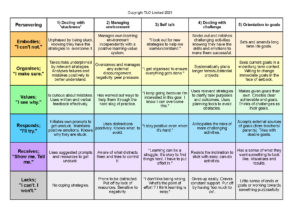
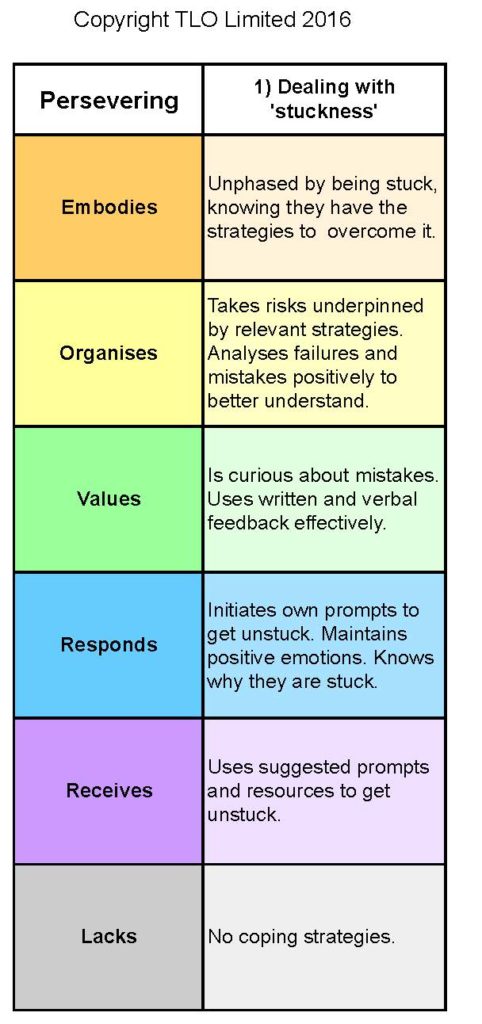
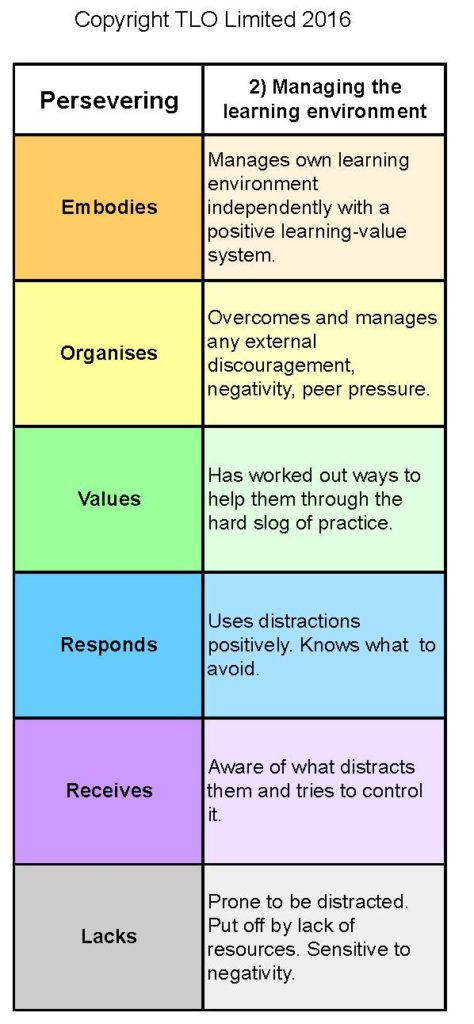

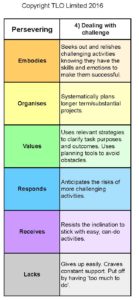





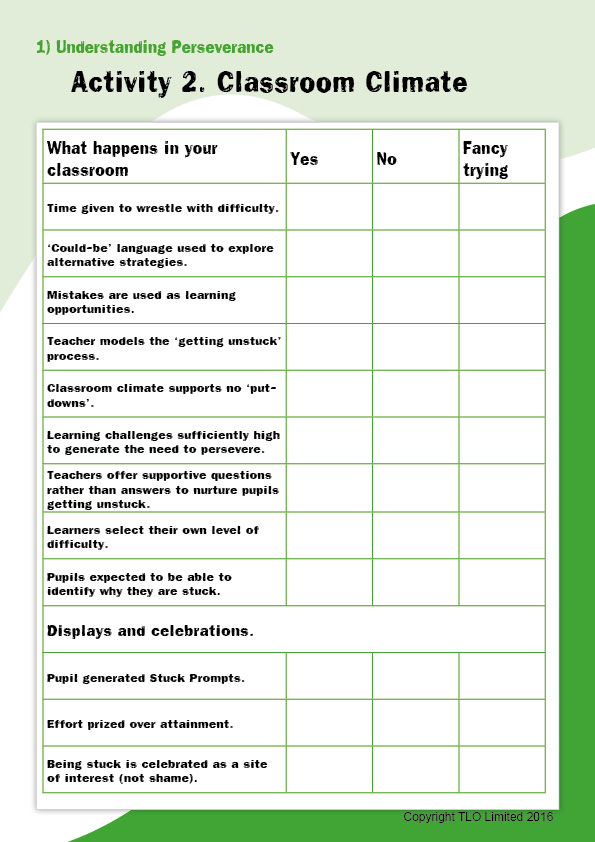
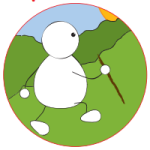
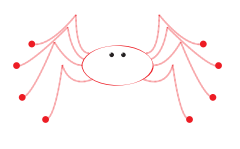
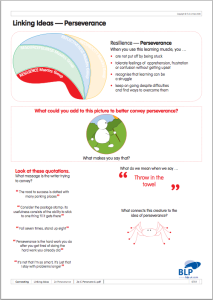

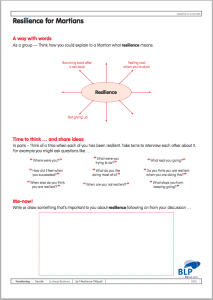
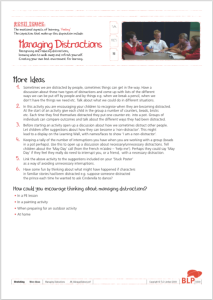
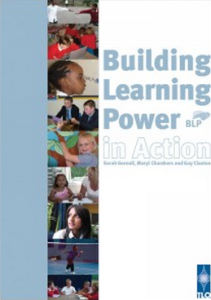
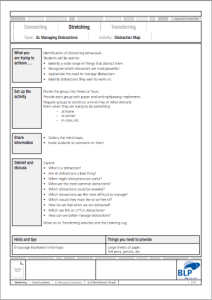
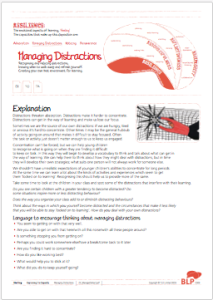
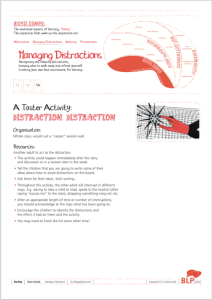
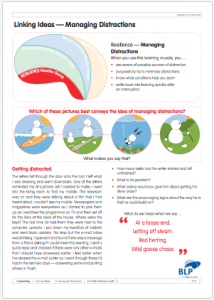
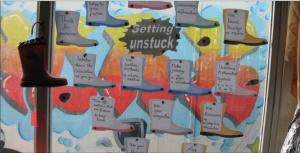

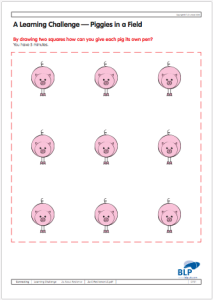
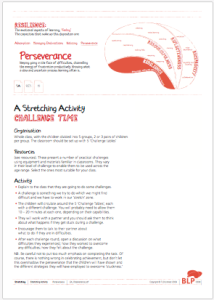
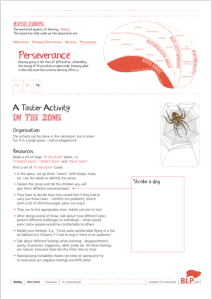
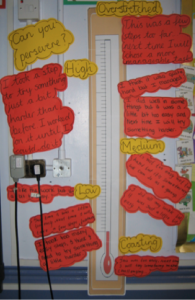

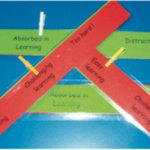
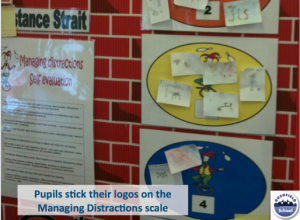
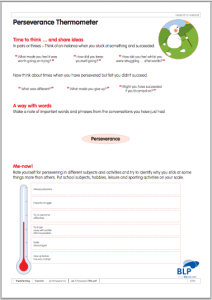
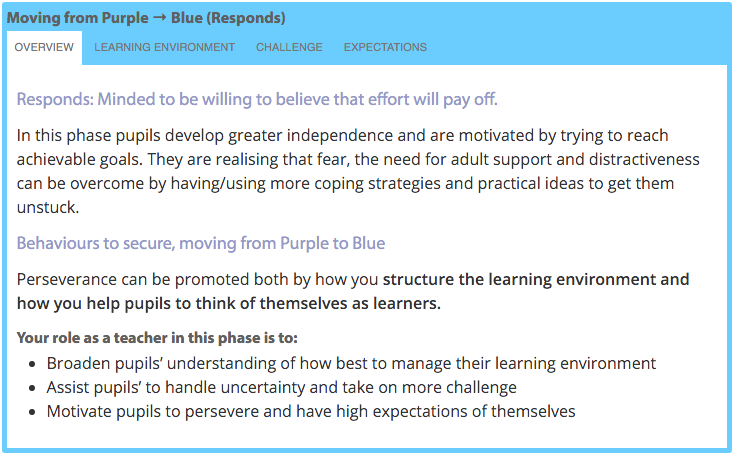
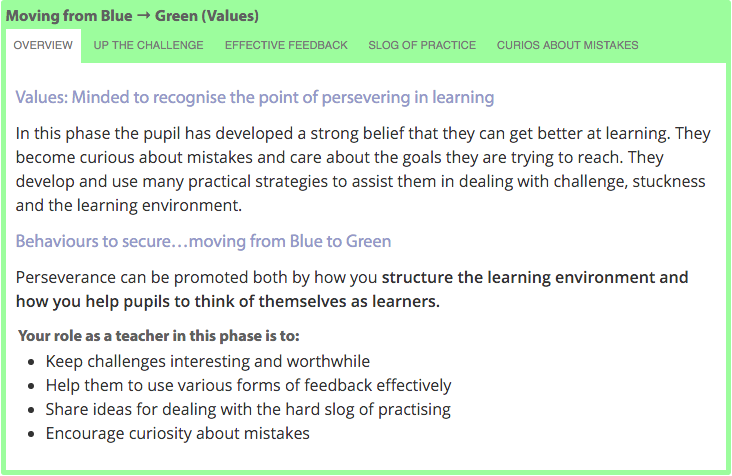
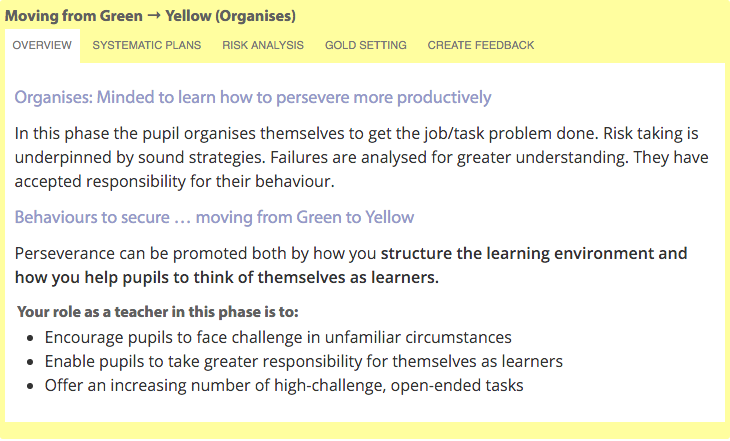
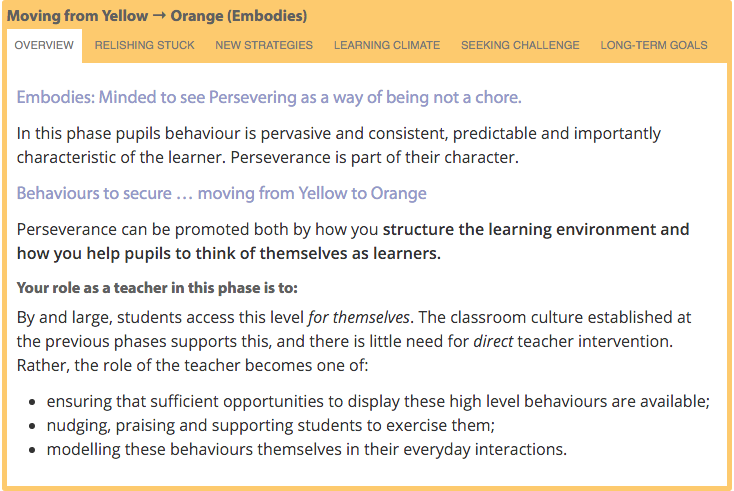
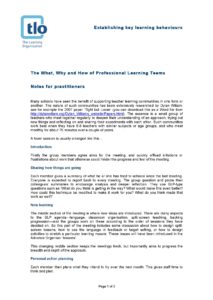
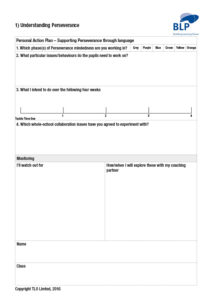
Comments are closed.